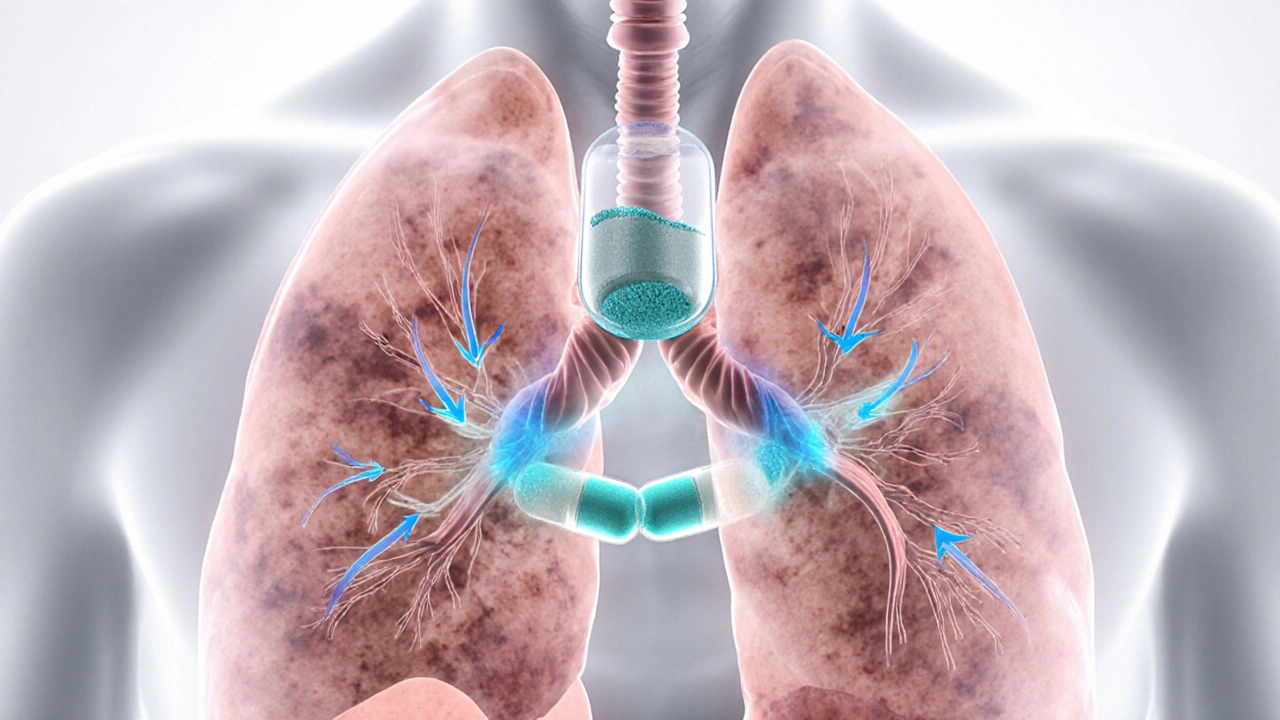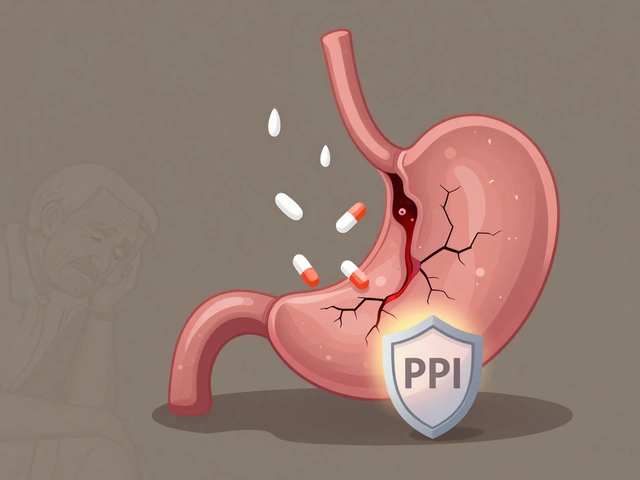Pirfenex – What You Need to Know
When working with Pirfenex, a brand‑name antifibrotic medication prescribed for idiopathic pulmonary fibrosis (IPF). Also known as Pirfenidone, it helps slow lung scarring by targeting fibroblast activity. The drug is part of a small class of medicines that aim to halt the progression of fibrotic lung disease rather than just relieve symptoms. If you or a loved one has been told they have Idiopathic Pulmonary Fibrosis, a chronic, progressive condition where lung tissue becomes stiff and scarred, you’ve probably heard doctors mention Pirfenex as a treatment option.
How Pirfenex Fits Into Antifibrotic Therapy
Pirfenex belongs to the broader category of antifibrotic therapy, drugs that specifically aim to reduce or stop the formation of excess fibrous tissue in organs. The primary goal of this therapy is to preserve lung function and improve quality of life. Unlike traditional bronchodilators or steroids, antifibrotics act on the cellular processes that drive scar formation. Pirfenex’s active ingredient, pirfenidone, works by inhibiting the production of transforming growth factor‑beta (TGF‑β) and other pro‑fibrotic pathways, which are key culprits in the development of IPF.
Because it tackles the disease at its source, Pirfenex is usually started early after diagnosis. Studies show that patients who begin treatment promptly can see a slower decline in forced vital capacity (FVC), the standard measure of lung function. In plain terms, this means a slower loss of breathing ability over time. The drug is taken orally, typically three times a day with food to minimize stomach irritation.
While the benefits are clear for many, Pirfenex also comes with a set of considerations that every patient should know. The most common side effects, include nausea, rash, and photosensitivity. These issues often improve after the first few weeks as the body adjusts, but they can be bothersome enough to require dose adjustments. Liver function monitoring is another essential part of the treatment plan because the drug is metabolized in the liver. Regular blood tests are recommended to catch any early signs of hepatic stress.
Dosage guidelines for Pirfenex are fairly strict to balance effectiveness with tolerability. The standard regimen starts at a low dose—usually 267 mg three times daily—and ramps up over two weeks to a target dose of 801 mg three times daily, provided the patient tolerates the increase. This titration helps reduce the likelihood of severe nausea or dizziness. If side effects become too intense, physicians may hold the dose, reduce it, or in rare cases, discontinue therapy.
Drug interactions are also something to watch. Pirfenex can increase the blood levels of certain anticoagulants, such as warfarin, and may interfere with some CYP1A2 substrates like caffeine. Patients are advised to keep a consistent caffeine intake and to inform their doctor about any other medications, including over‑the‑counter supplements. The combination with strong CYP1A2 inhibitors (e.g., fluvoxamine) should be avoided because it can raise pirfenidone concentrations and heighten the risk of side effects.
Beyond the core pharmacology, there are practical steps that can help you get the most out of Pirfenex. Taking the pills with a substantial meal reduces stomach upset. Wearing sunscreen or using protective clothing when outdoors can prevent the photosensitivity rash that some users experience. Staying hydrated and avoiding alcohol can also lessen liver strain. Many patients keep a simple diary to track symptoms, side effects, and any changes in breathing, which makes follow‑up appointments more productive.
In summary, Pirfenex is a key player in the fight against idiopathic pulmonary fibrosis. It offers a disease‑modifying approach that can extend the time patients spend enjoying everyday activities. However, success hinges on careful dosing, routine monitoring, and proactive management of side effects. The next section of this page lists articles that dive deeper into each of these aspects—everything from buying generic alternatives safely to understanding the science behind antifibrotic drugs. Whether you’re just starting treatment or looking for tips to fine‑tune your regimen, the collection below gives you practical, easy‑to‑apply information to make Pirfenex work for you.

Pirfenex vs Other IPF Drugs: In‑Depth Comparison Guide
A comprehensive comparison of Pirfenex (pirfenidone) with its main alternatives, covering efficacy, safety, cost, and practical tips for patients with idiopathic pulmonary fibrosis.
view more




